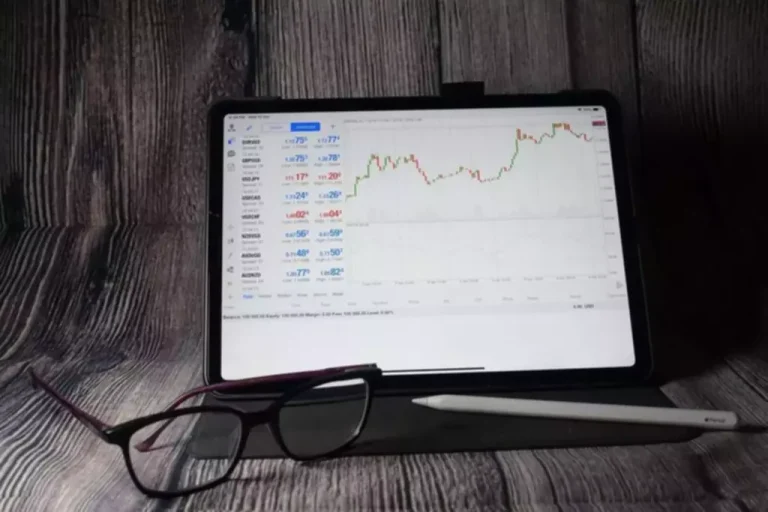Content
“That may not be the most efficient markets for the 2020s,” he added. The U.S. Securities and Exchange Commission (SEC) reportedly will not seek to ban payment for order flow (PFOF), https://www.xcritical.com/ despite earlier indications that SEC Chair Gary Gensler had been inclined to issue such a prohibition. A notable winner from this apparent decision is online broker Robinhood Markets, Inc. (HOOD), whose business model is based on PFOF. While there certainly are drawbacks to PFOF, an undeniable benefit is the adoption of commission free trading by most brokerages.
- Interactive Brokers (IBKR) is a top choice for professional traders due to an account type specially developed for the task of optimal order execution.
- A 2022 study found that sending orders to market makers is a bad deal for options traders because of wider bid-ask spreads.
- People did that, even if those people lost money on PFOF (not to mention a volatile market).
- Some critics argue that it creates potential conflicts of interest and reduces transparency in the market.
- The U.S. Securities and Exchange Commission (SEC) is considering a full ban on the payment for order flow (PFOF).
- The previous year, the SEC fined Robinhood $65 million for failing in late 2010 to properly disclose to customers the PFOF it received for trading and for failing to execute the best trades for their clients.
Payment for Order Flow, explained
Market makers must also quote the volume in which they’re willing to trade along with the frequency of time they will quote at the best bid and best offer prices. Market makers provide liquidity and depth to markets and profit from the difference in the bid-ask spread. Blain Reinkensmeyer has 20 years of trading experience with over 2,500 pfof meaning trades placed during that time.
Best order execution for professionals – Interactive Brokers
One such change is increased spreads on public exchanges, as market makers are more hesitant to take the other side of these more experienced traders’ orders. This punishes more informed traders and could force more and more trading volume into PFOF channels. But with multiple trading venues and when trades are matched within milliseconds, it’s not easy to prove (or disprove). Investors ultimately realized there was a fee hidden in their sell order, and it came in the form of a lower market value for the executed share. Brokers would execute trades based on what gave them the highest profit, not what was the best execution value for their clients. The Regulation National Market System (NMS), enacted in 2005, is a set of rules aimed at increasing transparency in the stock market.
What is order execution quality?
Learning the mechanisms of the market can help avoid a world of hurt, and offer some peace of mind. Educational resources, like those at Public.com, are a great place to start. Market makers make money by selling a stock for a slightly higher price than they bought it for.
The clearing firm is responsible for making sure everything goes smoothly between the brokerage, market maker, and exchange. The previous year, the SEC fined Robinhood $65 million for failing in late 2010 to properly disclose to customers the PFOF it received for trading and for failing to execute the best trades for their clients. PFOF became the subject of renewed debate after a 2021 SEC report on retail investor mania for GameStop (GME) and other meme stocks. The SEC said it believed some brokerages might have been encouraging customers to trade so they could profit from PFOF. Brokerage customers can ask for payment data for specific transactions from their brokers, though it could take weeks to get a response.
But we can’t say for certain which broker has the fastest execution, because internet connectivity plays a very large role. Learn more about its other features and fees by visiting my complete review of Fidelity. The U.S. Securities and Exchange Commission (SEC) is considering a full ban on the payment for order flow (PFOF). The reason is that this practice creates “an inherent conflict of interest,” according to SEC Chairman Gary Gensler, in a recent interview with Barron’s. This practice is known to the investing world as payment for order flow (PFOF).

Investments in T-bills involve a variety of risks, including credit risk, interest rate risk, and liquidity risk. As a general rule, the price of a T-bills moves inversely to changes in interest rates. Although T-bills are considered safer than many other financial instruments, you could lose all or a part of your investment. The practice of PFOF has always been controversial for reasons touched upon above. Traders discovered that some of their “free” trades were costing them more because they weren’t getting the best prices for their orders. A 2022 study found that sending orders to market makers is a bad deal for options traders because of wider bid-ask spreads.
Payment for order flow (PFOF) is compensation received by a broker in exchange for routing customer orders to a market maker. The practice has become an increasingly common way for brokers to generate revenue as the industry has largely done away with commissions on stock trades and significantly reduced commissions on other instruments. Payment for order flow is a controversial topic since it’s not always clear whether it benefits or hurts consumers.

Usually the amount in rebates a brokerage receives is tied to the size of the trades. Smaller orders are less likely to have an impact on market prices, motivating market makers to pay more for them. The type of stocks traded can also affect how much they get paid for in rebates, since volatile stocks have wider spreads and market makers profit more from them. A market maker is a dealer who buys and sells stocks and other assets like options trading at specified prices on the stock exchange. Market makers play a vital role on Wall Street, as they create liquidity in the market. Online brokers with zero-commission trading tend to attract a wide array of investors.
PFOF is how brokers get paid by market makers for routing client orders to them. In the 2010s, brokers were forced into a race for the lowest fees possible, given the competition. PFOF allowed the brokerages to make up for lost customer commissions. It can come as a fee per trade, a share of the spread, or other financial incentives. In the world of zero-commission trading, it’s natural to wonder how brokers keep their doors open. For many brokers, one of the primary revenue sources is payment for order flow (PFOF), a practice where brokers receive compensation for routing your trades through specific market makers.
Gensler did not indicate whether the SEC has found examples of PFOF causing harm to investors. However, he has mentioned in the past that the U.K., Canada, and Australia are among the countries that have banned PFOF. But just because the average investor’s order is filled at a slightly better price does not mean they reap the rewards from PFOF. In short, we don’t receive (or take) any form of payment for order flow.

Bond Accounts are not recommendations of individual bonds or default allocations. The bonds in the Bond Account have not been selected based on your needs or risk profile. The bonds in your Bond Account will not be rebalanced and allocations will not be updated, except for Corporate Actions. This means that your trades are routed directly to exchanges or other venues where PFOF is not involved. Instead, there is an optional tipping option to help offset the cost of executing trades. Its when a broker-dealer is paid by a market maker to route orders to the market maker.
The value of Bonds fluctuate and any investments sold prior to maturity may result in gain or loss of principal. In general, when interest rates go up, Bond prices typically drop, and vice versa. Bonds with higher yields or offered by issuers with lower credit ratings generally carry a higher degree of risk. All fixed income securities are subject to price change and availability, and yield is subject to change. Bond ratings, if provided, are third party opinions on the overall bond’s credit worthiness at the time the rating is assigned.
Regulation NMS, through its Rules 605 and 606, also requires broker-dealers to make two reports available, one to disclose the execution quality and the other to give the payment for order-flow statistics. An important part of the NMS was creating the NBBO, which requires all trading venues to display their best available bid and offer prices, and for trades to be executed at these prices or better. This was meant to promote competition among trading venues, which should lead to better prices for investors. Market makers thus provide brokers with significantly more in PFOF for routing options trades to them, both overall and on a per-share basis. Based on data from SEC Rule 606 reports, researchers in the 2022 study mentioned above calculated that the typical PFOF paid to a broker for routing options is far more than for stocks.